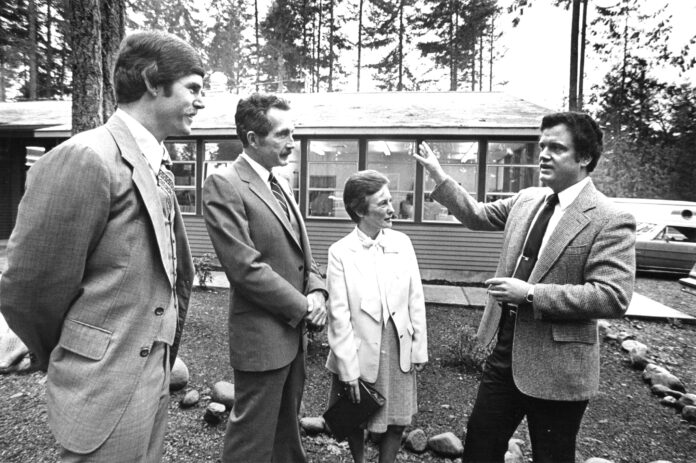Before Wilderness Village, prior to Four Corners, earlier than Witte Road or Kent-Kangley, there was an original Maple Valley settlement. It was located where Highway 169 crosses the Cedar River near the stoplight at S.E. 216th Way. The proposed town was platted and registered by an early pioneer, C.O. Russell in 1887 but never incorporated. At the time Native Americans still fished along the Cedar and rail lines served Black Diamond’s coal mines and Taylor’s coal-fired clay factory. As the years passed, that area came to be known as old Maple Valley and was increasingly relegated to second fiddle as Wilderness Village and Four Corners became the area’s central business districts. This is the third of a three-part series highlighting aspects of the original Maple Valley town site.
Maple Valley was incorporated on Aug. 31, 1997, and today encompasses nearly 4,000 acres with a population of 28,000. But the original Maple Valley community that once boasted three successive train stations, three hotels, stores, shops, and bunkhouses isn’t even part of the City. Instead, businesses such as Cascadia Pizza, Good Earth Works, the Food Bank, Foley’s Market, Cedar Grange Hall, plus scores of homes are in unincorporated King County, over a half-mile removed from Maple Valley city limits. The closest in-city property to old Maple Valley is the King County Sheriff’s Precinct 3, two-thirds of a mile south where S.E. 231st Street crosses the Maple Valley Highway.
The seeds of this anomaly date back 40 years when then King County Executive Randy Revelle visited the Maple Valley Community Center and this Greg Gilbert photo appeared in the March 9, 1983, Seattle Times. Revelle was visiting the area to announce the new police station to be built across from the Fire District 43 headquarters on S.E. 231st Street. Shown from left to right are Scott Churchill, the center’s director; Chuck Hardaway, a member of the Maple Valley Area Council; Linda McMonagle, chairperson of the Area Council; and Randy Revelle who served as Executive from 1981 to Jan. 1, 1986. This photo comes courtesy of JoAnne Matsumura, an Issaquah historian, with background information on Maple Valley’s incorporation from Jim Flynn, a local business owner.
The incorporation of Maple Valley as a city got its start after Washington passed the 1990 Growth Management Act that created the concept of Urban Growth Areas or UGA. Laurie Iddings spearheaded a movement to control growth in the greater Maple Valley area. There were also local fears that the City of Kent had its eyes on land in Covington and Maple Valley as both areas were still unincorporated and subject to annexation.
A local committee was formed, and King County provided a grant to study the financial viability of the new city. The area designated for incorporation followed most sewer district boundaries located within the Tahoma School District. Signatures were gathered on petitions and a vote was scheduled for Nov. 1996. The incorporation was approved with an overwhelming 80% yes vote. In April 1997, elections were held and the first City Council took charge and began setting up the new town. Laurie Iddings was selected as the first Mayor and served 12 years from 1997 to 2010.
But for some the question remains, where exactly is Maple Valley? Is Maple Valley defined by the 98038 ZIP Code that stretches from Cedar Grove on the north past S.E. 288th Street on the south, and from the eastern ghost towns of Kerriston and Taylor, west to Cherokee Bay and Lake Lucerne (yet chopping off the west half of Pipe Lake)? Or is Maple Valley really the Tahoma School District and its 8,500 students spanning neighborhoods from the east side of Lake Sawyer stretching north almost to the Maplewood Golf Course; and west from Tiger Mountain through Hobart and Ravensdale all the way to Lake Young? After all, the district’s name comprises the first two letters of the consolidated schools, Taylor, Hobart, and Maple Valley in its original spelling, Ta-Ho-Ma.
As to why the original Maple Valley settlement that grew up around the railroad’s fourth crossing of Cedar River is not located within the city that bears its name? That area wasn’t within a sewer district so couldn’t be part of the Urban Growth Area, and thus left out of the incorporated area that comprises Maple Valley city limits.







